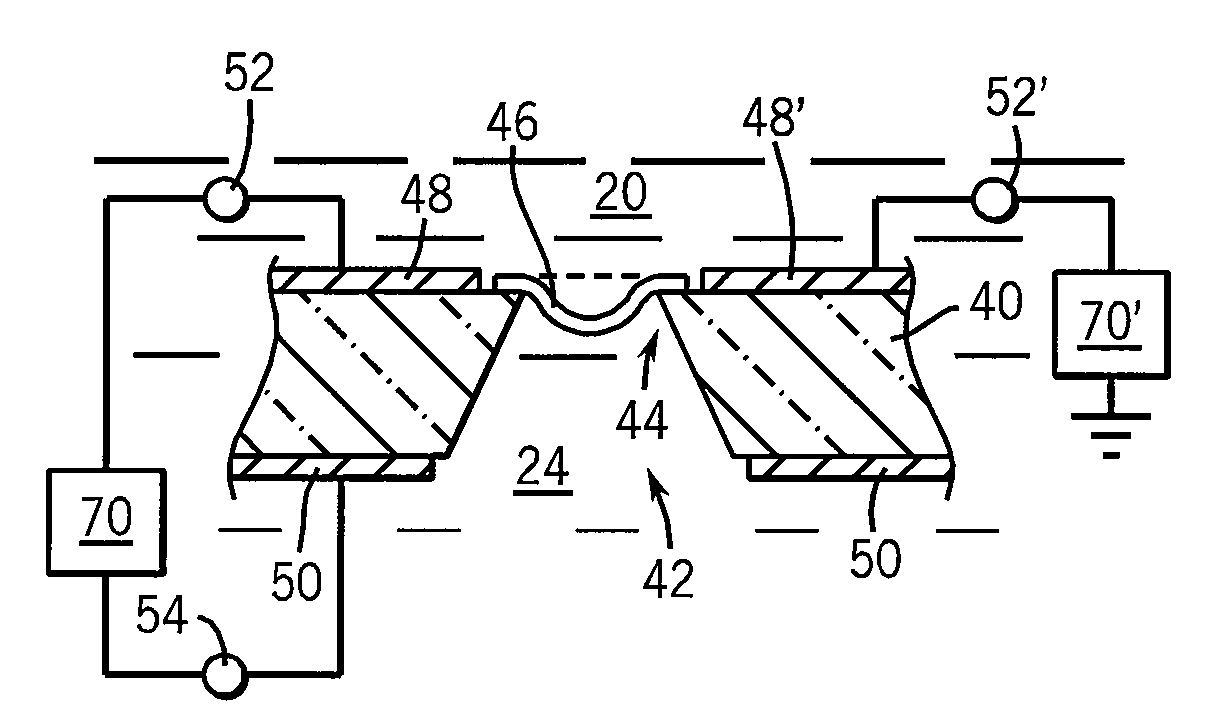Radio-frequency ion channel probe
a radiofrequency ion channel and probe technology, applied in the field of patchclamp, can solve the problems of poor electrical characteristics of a bare electrode, inability to resolve rapid changes in ionic transport in time domain, and significant limited sensitivity of small current flow measurement through ion channels, so as to improve sensitivity and response rate, accurate and rapid assessment of changes in cell wall membrane
- Summary
- Abstract
- Description
- Claims
- Application Information
AI Technical Summary
Benefits of technology
Problems solved by technology
Method used
Image
Examples
Embodiment Construction
[0036]Referring now to FIG. 1, a prior art whole-cell patch-clamp 10 may employ a micropipette 12 having an aperture 14 to which a cell 16 is drawn by suction. The cell 16 may attach to the aperture 14 to create a giga-ohm seal to a lip 18 of that aperture. The cell 16 may otherwise be suspended in a liquid medium 20 providing an environment desired for a particular experiment.
[0037]A sharp suction may be used to open a hole 21 in the cell wall of the cell 16 providing a low resistance path from the interior cytoplasm of the cell through a solution 24 to a microelectrode 26 within the micropipette 12. The microelectrode 26 is typically a silver electrode coated with silver chloride for electrochemical stability.
[0038]A sensitive current detector 30 may be connected between the microelectrode 26 and the liquid medium 20 to measure the passage of ions 32 through channels in the cell wall. The current detector 30 may provide for a voltage-clamping action, if desired, using a convention...
PUM
 Login to View More
Login to View More Abstract
Description
Claims
Application Information
 Login to View More
Login to View More - R&D
- Intellectual Property
- Life Sciences
- Materials
- Tech Scout
- Unparalleled Data Quality
- Higher Quality Content
- 60% Fewer Hallucinations
Browse by: Latest US Patents, China's latest patents, Technical Efficacy Thesaurus, Application Domain, Technology Topic, Popular Technical Reports.
© 2025 PatSnap. All rights reserved.Legal|Privacy policy|Modern Slavery Act Transparency Statement|Sitemap|About US| Contact US: help@patsnap.com



